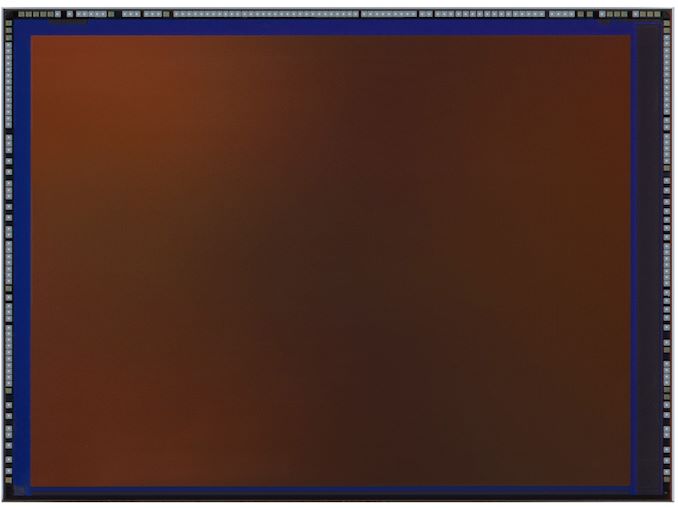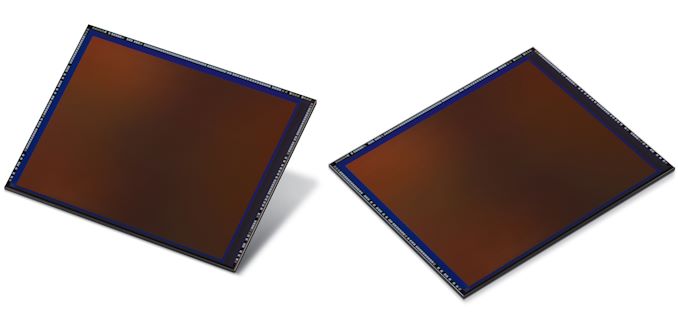Samsung Unveils ISOCELL Bright HMX 108 MP Sensor for Smartphones
by Anton Shilov on August 13, 2019 3:00 PM EST- Posted in
- Smartphones
- Samsung
- Xiaomi
- Sensor
- HMX

Samsung this week has introduced the industry’s first 108 megapixel image sensor for smartphones. The Samsung ISOCELL Bright HMX promises to allow smartphones to take photos comparable to those from DSLR cameras. One of the first handsets to use the new sensor will be a phone from Xiaomi.
Samsung’s flagship 108 MP ISOCELL Bright HMX is a fairly large 1/1.33-inch image sensor for smartphones. Thanks to the combination of its sheer size and the underlying sensor technology, the Bright HMX is designed to absorb more light than existing image sensors, allowing it to offer better photos even in low-lit conditions. The sensor also supports the company’s 2x2 pixel-binning Tetracell technology, which merges four pixels into one to produce brighter 27 MP photos. In addition, the ISOCELL Bright HMX features Samsung's Smart-ISO capability, which uses high ISOs in darker settings to reduce noise and low ISOs in brighter settings to improve pixel saturation.
When it comes to video, the HMX supports recording at up to 6K (6016 x 3384) resolutions at 30 frames per second, with the same field-of-view as photo mode.
One thing to note is that while the 108 MP ISOCELL Bright HMX sensor can offer a rather high image resolution, it's not a complete system in and of itself. Smartphone manufacturers will need to use SoCs that can handle such a large sensor, both in terms of consuming the sensor's 108 MP output, as well as offering the processing power (ISP and otherwise) to handle all the post-processing expected for a modern smartphone camera.
Samsung plans to begin mass production of the 108 MP ISOCELL Bright HMX image sensor later this month. Meanwhile, Samsung has confirmed that partner Xiaomi will be the first to use the sensor, though the companies are not saying what that first device will be.
Related Reading:
- Samsung Announces Galaxy Note10 & Note10+: A Redesign With Feature Disparity
- Samsung Unveils 64 MP & 48 MP ISOCELL Bright Image Sensors for Smartphones
Source: Samsung











39 Comments
View All Comments
jabber - Wednesday, August 14, 2019 - link
Yeah I'd be happy with a phone another 3mm thick or so if it helped. Bigger battery too! Win win.FunBunny2 - Wednesday, August 14, 2019 - link
"Everything anyone offers is way too thin."I guess Apple started that. So we end up with phones playing card thin and slippery as a trout, so we add some funky rubber ducky just so we can hold it. Regression of human intelligence?
zodiacfml - Tuesday, August 13, 2019 - link
a quick Google image search will show you the atrocious camera bump. in other words, it never became popular and its operating system made it worse.while a larger sensor will be nice to have which I want, the benefits are not too great vs current sensors when used with HDR and other techniques. The main benefit would be sharper pixels/detail when viewed at 100%, on a monitor, or TV. Noise or DR won't improve much with HDR
Tams80 - Wednesday, August 14, 2019 - link
It sounds like you never had one. Elop was the reason there was no true successor to it. Symbian was actually becoming very good and Nokia had Maemo/Meego going very well.The device was actually quite elegant, camera bump as well. But then I guess you like glass slabs.
extide - Tuesday, August 13, 2019 - link
"promises to allow smartphones to take photos comparable to those from DSLR cameras"Yeah... no. Even my 9 year old T2i would be better in almost all cases. Sensor size matters and even APS-C is over 4x the size of a 1/1.33" sensor. These modern sensors are great, but can't beat physics.
PeachNCream - Tuesday, August 13, 2019 - link
Various companies have made those sort of promises for years and failed to deliver results.DanNeely - Tuesday, August 13, 2019 - link
If the only metric you use in comparison is megapixels.Valantar - Tuesday, August 13, 2019 - link
Well, the sensor might technically be able to beat a low-end DSLR sensor (particularly a slightly old one), but it will only ever be used paired with teeny-tiny smartphone lens elements, so it's never going to perform well no matter what. Give it a decent sized lens and for all we know it might shine.saratoga4 - Tuesday, August 13, 2019 - link
>Yeah... no. Even my 9 year old T2i would be better in almost all cases. Sensor size matters and even APS-C is over 4x the size of a 1/1.33" sensorMost APS-C sensors are ancient though since there isn't much money left in dSLRs and since with a huge sensor there really isn't a need to be very sensitive, whereas this is state of the art. I think if you just look at sensitivity, this probably does beat a typical APS-C sensor.
>These modern sensors are great, but can't beat physics.
FWIW, overcoming a 4-5x difference in area only requires you to be 4-5x more sensitive, and you can actually do that without running into any physical limits. The funny thing is that since 98% of the money in sensors is in smartphones, they're consistently 5-10 years ahead of what is used in other markets. Consider the difference between an iPhone 4 and and today's iPhone and you can see what a difference 6 or 8 years worth of CMOS improvements have made.
extide - Tuesday, August 13, 2019 - link
> FWIW, overcoming a 4-5x difference in area only requires you to be 4-5x more sensitiveThat's a tall order, though. I mean the max sensitivity can be is that it detects 100% of the light hitting it. For something to be 4-5x better it would mean the APS-C sensor would have to be getting no more than 20-25% and this sensor 100%. That's not really realistic.